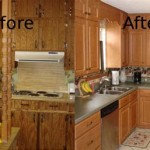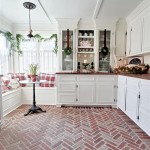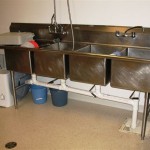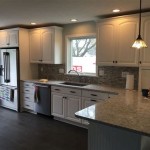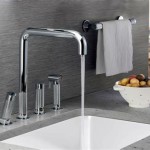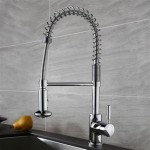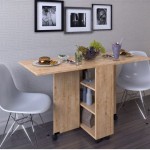Repurposed Kitchen Cabinets: Making The Most Of Your Spaces
Kitchen cabinets, traditionally designed for storage and organization within the culinary domain, possess a surprising versatility that extends far beyond their initial purpose. Repurposing these units offers a cost-effective and environmentally conscious method for maximizing space, enhancing functionality, and adding a personalized aesthetic to various areas of a home or even a commercial setting. The structural integrity and readily available hardware of kitchen cabinets make them ideal candidates for inventive transformations. Instead of discarding them during a renovation or remodel, exploring the potential of repurposing can unlock a wealth of creative and practical solutions.
The appeal of repurposing kitchen cabinets lies in several factors. First, it promotes sustainability by diverting usable materials from landfills, contributing to a reduction in waste and resource consumption. Second, it presents a budget-friendly alternative to purchasing new furniture or storage solutions. Used cabinets can often be acquired at significantly lower costs than custom-built or store-bought options. Third, it allows for a high degree of customization. Existing cabinets can be painted, refinished, reconfigured, and adapted to perfectly suit the unique needs and style of a particular space. Finally, repurposing offers the satisfaction of creating something new and functional from something old, adding a touch of individuality and character to one's surroundings.
Creating Functional Storage in Garages and Workshops
Garages and workshops often suffer from a lack of efficient storage, leading to cluttered spaces and difficulty in locating tools and equipment. Repurposed kitchen cabinets offer an excellent solution for organizing these areas. Base cabinets can be installed along walls to provide ample storage for tools, hardware, and automotive supplies. Drawers are particularly useful for organizing small items, while larger cabinets can accommodate power tools and other bulky equipment. The countertops of base cabinets can serve as work surfaces for various projects.
Upper kitchen cabinets can be mounted above workbenches or along garage walls to provide additional storage for less frequently used items. These cabinets are ideal for storing paints, chemicals, cleaning supplies, and other materials that need to be kept out of reach. Glass-front cabinets can be used to display tools or collectibles, adding a touch of personality to the garage or workshop. Reinforcing the cabinet mounting is crucial in these environments, given the weight that they might need to hold and the more strenuous activities that often occur.
Consider the layout of the garage or workshop when planning the installation of repurposed cabinets. Maximize vertical space by stacking cabinets or mounting them at different heights. Leave sufficient space for maneuvering around vehicles and equipment. Ensure that cabinets are securely anchored to the wall to prevent them from tipping over, especially if they are heavily loaded.
Furthermore, the aesthetic of the repurposed cabinets can be tailored to suit the garage or workshop environment. Painting the cabinets in a durable, easy-to-clean finish can improve their appearance and protect them from wear and tear. Adding metal handles or pulls can enhance their functionality and durability. Labeling the cabinets can help to keep things organized and easily accessible. The adaptability of the cabinet's initial design allows for integration of specialized storage mechanisms, such as pegboards or tool hangers, into the cabinet's interior or exterior.
Transforming Laundry Rooms with Repurposed Cabinets
Laundry rooms, often small and cramped spaces, can greatly benefit from the added storage and organization provided by repurposed kitchen cabinets. Base cabinets can be used to create a folding station or a countertop for sorting laundry. The cabinets can also house laundry supplies, such as detergent, fabric softener, and stain removers. Consider incorporating a pull-out hamper or laundry basket into the base cabinet design to streamline the laundry process.
Upper kitchen cabinets can be installed above the washer and dryer to provide additional storage for cleaning supplies, ironing boards, and other laundry-related items. Open shelving can be incorporated into the design to display decorative items or store frequently used items within easy reach. A combination of closed and open storage options provides both functional storage and a visually appealing aesthetic.
When repurposing kitchen cabinets in a laundry room, it is important to consider the moisture and humidity levels. Choose cabinet materials that are resistant to moisture damage, such as solid wood or plywood with a water-resistant finish. Ensure that the cabinets are properly sealed to prevent moisture from seeping into the interior. Consider installing a ventilation fan to reduce humidity levels in the laundry room.
The appearance of the repurposed cabinets can be enhanced by painting them in a light and airy color, creating a bright and inviting atmosphere. Adding decorative hardware, such as knobs and pulls, can personalize the space. Consider incorporating a backsplash made from tiles or other water-resistant materials to protect the wall behind the washer and dryer. The incorporation of a small sink into the countertop, if plumbing permits, can significantly enhance the functionality of the laundry room.
Creating Unique Storage Solutions in Home Offices
Home offices often require a combination of storage and workspace. Repurposed kitchen cabinets can be creatively utilized to create a functional and aesthetically pleasing home office environment. Base cabinets can be used to create a built-in desk or workstation. The cabinets can house computers, printers, and other office equipment. Drawers can be used to organize files, stationery, and other office supplies. The countertop of the base cabinet provides a spacious work surface.
Upper kitchen cabinets can be mounted above the desk to provide additional storage for books, documents, and decorative items. Open shelving can be incorporated into the design to display awards, certificates, or personal items. A combination of closed and open storage options allows for both functional storage and a personalized aesthetic.
Consider the layout of the home office when planning the installation of repurposed cabinets. Maximize space by utilizing vertical storage options. Consider creating a corner desk by joining two base cabinets together. Ensure that the desk is at a comfortable height for working. Provide adequate lighting to illuminate the work surface.
The appearance of the repurposed cabinets can be tailored to suit the style of the home office. Painting the cabinets in a neutral color can create a professional and calming atmosphere. Adding decorative hardware, such as knobs and pulls, can personalize the space. Consider incorporating a comfortable chair and ergonomic accessories to promote productivity and well-being. Integrating cable management solutions into the cabinet design can help to keep the workspace tidy and organized.
Beyond these specific applications, repurposed kitchen cabinets can find use in a variety of other spaces. They can be transformed into entertainment centers in living rooms, providing storage for media equipment and DVDs. They can be used as shelving units in bedrooms or hallways, providing storage for books, clothing, or decorative items. They can even be repurposed as potting benches in gardens or outdoor spaces, providing a convenient workspace for gardening tasks. The possibilities are limited only by one's imagination.
When selecting kitchen cabinets for repurposing, it is important to consider their condition and construction. Choose cabinets that are structurally sound and free from significant damage. Inspect the cabinets for signs of water damage, mold, or insect infestation. Ensure that the doors and drawers open and close smoothly. Consider the style and design of the cabinets, and how they will fit into the overall aesthetic of the space.
The process of repurposing kitchen cabinets often involves some degree of modification. This may include painting, refinishing, replacing hardware, or reconfiguring the cabinets to suit the new application. It is important to have the necessary tools and skills to perform these modifications safely and effectively. If unsure, consider seeking assistance from a professional carpenter or contractor. Prior to any modification or installation, it is important to thoroughly clean the cabinets and assess their structural integrity. Reinforcement may be necessary to ensure the cabinets can withstand the intended use.
In conclusion, repurposing kitchen cabinets is a versatile and rewarding way to maximize space, enhance functionality, and add a personalized touch to various areas of a home or commercial setting. By diverting usable materials from landfills, it promotes sustainability and reduces waste. By offering a budget-friendly alternative to purchasing new furniture, it saves money and resources. By allowing for a high degree of customization, it enables the creation of unique and functional storage solutions that perfectly suit the needs and style of a particular space. Whether creating functional storage in garages and workshops, transforming laundry rooms, or creating unique storage solutions in home offices, repurposed kitchen cabinets offer a wealth of creative and practical possibilities.

What To Do With Old Kitchen Cabinets

How To Extend Kitchen Cabinets Up The Ceiling Thrifty Decor Diy And Organizing

Budget Diy Extend Kitchen Cabinets To The Ceiling Pennies For A Fortune

Diy Built In Bookcases Cabinets And Window Bench

How I Organize My Kitchen To Make It More Functional Easy Maintain

How To Extend Kitchen Cabinets Up The Ceiling Thrifty Decor Diy And Organizing

How I Closed The Space Above My Cabinets A Erfly House

69 Stylish Kitchen Cabinet Ideas 2025

69 Stylish Kitchen Cabinet Ideas 2025

How To Organize Your Kitchen Cabinets And Pantry Feed Me Phoebe
Related Posts

